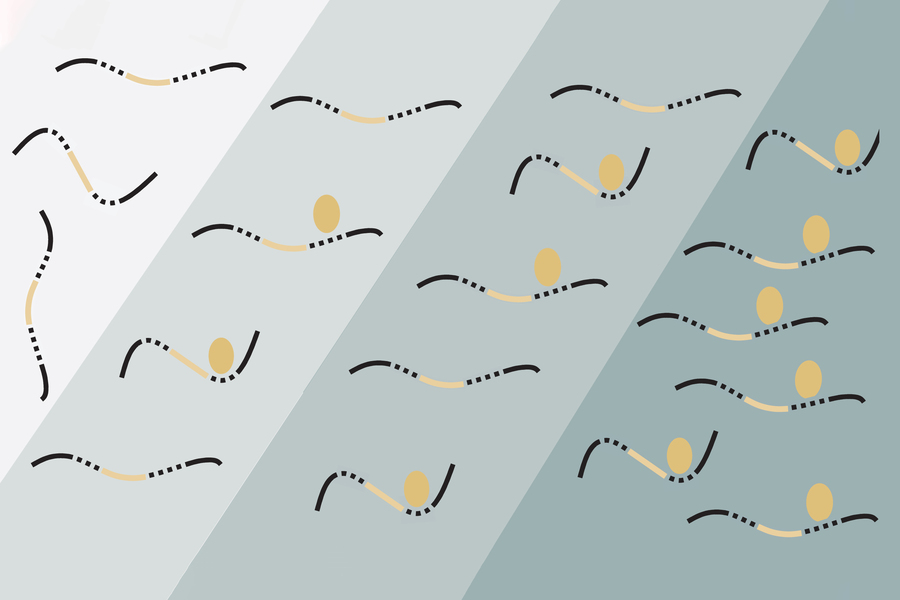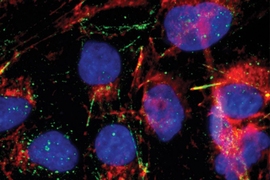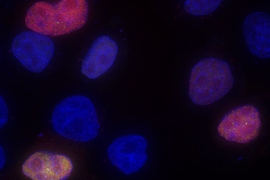In every cell, RNA-binding proteins (RBPs) help tune gene expression and control biological processes by binding to RNA sequences. Researchers often assume that individual RBPs latch tightly to just one RNA sequence. For instance, an essential family of RBPs, the Rbfox family, was thought to bind one particular RNA sequence alone. However, it’s becoming increasingly clear that this idea greatly oversimplifies Rbfox’s vital role in development.
Members of the Rbfox family are among the best-studied RBPs and have been implicated in mammalian brain, heart, and muscle development since their discovery 25 years ago. They influence how RNA transcripts are “spliced” together to form a final RNA product, and have been associated with disorders like autism and epilepsy. But this family of RBPs is compelling for another reason as well: until recently, it was considered a classic example of predictable binding.
More often than not, it seemed, Rbfox proteins bound to a very specific sequence, or motif, of nucleotide bases, “GCAUG.” Occasionally, binding analyses hinted that Rbfox proteins might attach to other RNA sequences as well, but these findings were usually discarded. Now, a team of biologists from MIT has found that Rbfox proteins actually bind less tightly — but no less frequently — to a handful of other RNA nucleotide sequences besides GCAUG. These so-called “secondary motifs” could be key to normal brain development, and help neurons grow and assume specific roles.
“Previously, possible binding of Rbfox proteins to atypical sites had been largely ignored,” says Christopher Burge, professor of biology and the study’s senior author. “But we’ve helped demonstrate that these secondary motifs form their own separate class of binding sites with important physiological functions.”
Graduate student Bridget Begg is the first author of the study, published Aug. 17 in Nature Structural & Molecular Biology.
“Two-wave” regulation
After the discovery that GCAUG was the primary RNA binding site for mammalian Rbfox proteins, researchers characterized its binding in living cells using a technique called CLIP (crosslinking-immunoprecipitation). However, CLIP has several limitations. For example, it can indicate where a protein is bound, but not how much protein is bound there. It’s also hampered by some technical biases, including substantial false-negative and false-positive results.
To address these shortcomings, the Burge lab developed two complementary techniques to better quantify protein binding, this time in a test tube: RBNS (RNA Bind-n-Seq), and later, nsRBNS (RNA Bind-n-Seq with natural sequences), both of which incubate an RBP of interest with a synthetic RNA library. First author Begg performed nsRBNS with naturally-occurring mammalian RNA sequences, and identified a variety of intermediate-affinity secondary motifs that were bound in the absence of GCAUG. She then compared her own data with publicly-available CLIP results to examine the “aberrant” binding that had often been discarded, demonstrating that signals for these motifs existed across many CLIP datasets.
To probe the biological role of these motifs, Begg performed reporter assays to show that the motifs could regulate Rbfox’s RNA splicing behavior. Subsequently, computational analyses by Begg and co-author Marvin Jens using mouse neuronal data established a handful of secondary motifs that appeared to be involved in neuronal differentiation and cellular diversification.
Based on analyses of these key secondary motifs, Begg and colleagues devised a “two-wave” model. Early in development, they believe, Rbfox proteins bind predominantly to high-affinity RNA sequences like GCAUG, in order to tune gene expression. Later on, as the Rbfox concentration increases, those primary motifs become fully occupied and Rbfox additionally binds to the secondary motifs. This results in a second wave of Rbfox-regulated RNA splicing with a different set of genes.
Begg theorizes that the first wave of Rbfox proteins binds GCAUG sequences early in development, and she showed that they regulate genes involved in nerve growth, like cytoskeleton and membrane organization. The second wave appears to help neurons establish electrical and chemical signaling. In other cases, secondary motifs might help neurons specialize into different subtypes with different jobs.
John Conboy, a molecular biologist at Lawrence Berkeley National Laboratory and an expert in Rbfox binding, says the Burge lab’s two-wave model clearly shows how a single RBP can bind different RNA sequences — regulating splicing of distinct gene sets and influencing key processes during brain development. “This quantitative analysis of RNA-protein interactions, in a field that is often semi-quantitative at best, contributes fascinating new insights into the role of RNA splicing in cell type specification,” he says.
A binding spectrum
The researchers suspect that this two-wave model is not unique to Rbfox. “This is probably happening with many different RBPs that regulate development and other dynamic processes,” Burge says. “In the future, considering secondary motifs will help us to better understand developmental disorders and diseases, which can occur when RBPs are over- or under-expressed.”
Begg adds that secondary motifs should be incorporated into computer models that predict gene expression, in order to probe cellular behavior. “I think it’s very exciting that these more finely-tuned developmental processes, like neuronal differentiation, could be regulated by secondary motifs,” she says.
Both Begg and Burge agree it’s time to consider the entire spectrum of Rbfox binding, which are highly influenced by factors like protein concentration, binding strength, and timing. According to Begg, “Rbfox regulation is actually more complex than we sometimes give it credit for.”
This research was funded by the EMBO Long Term Fellowship and by a grant from the National Institutes of Health.









